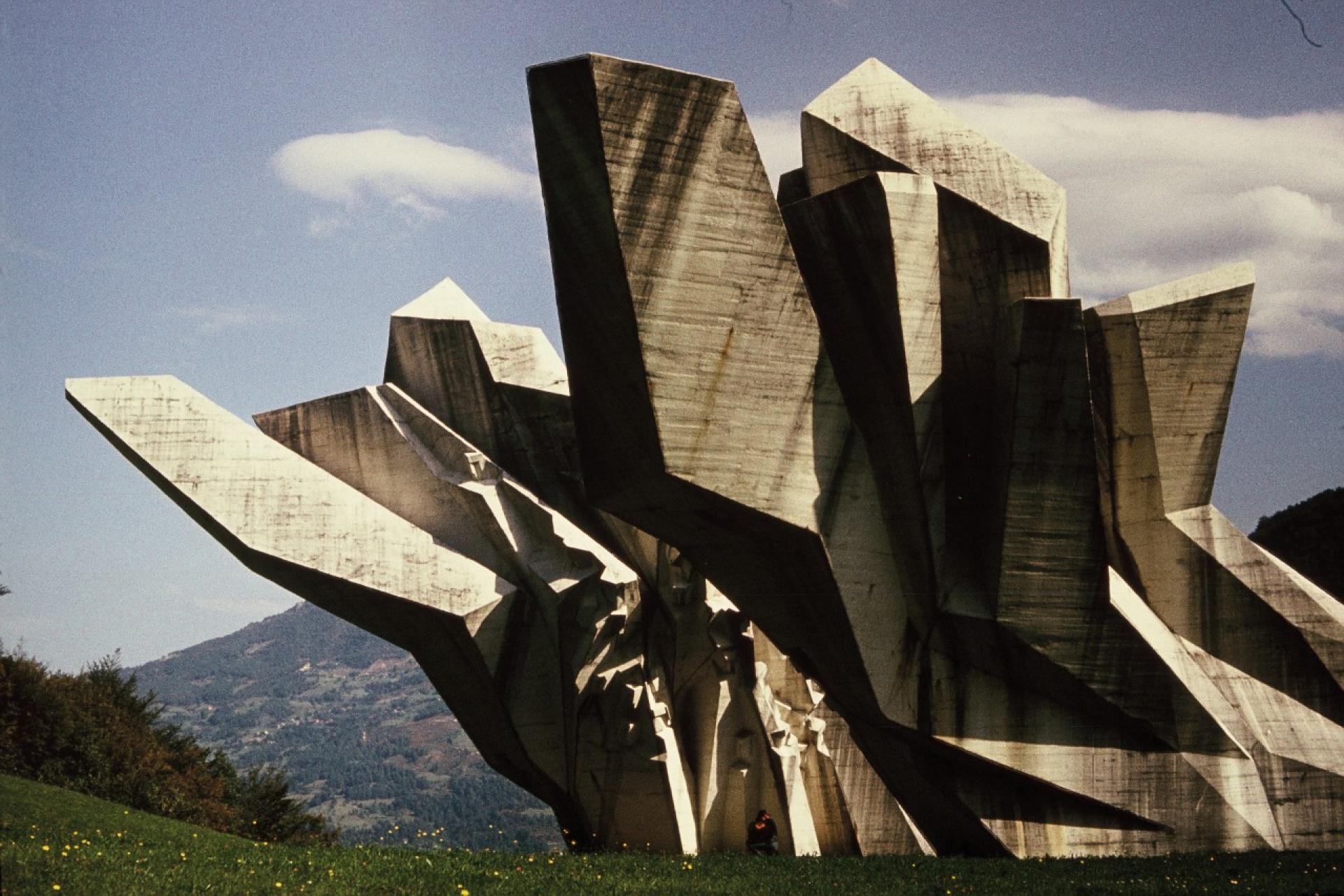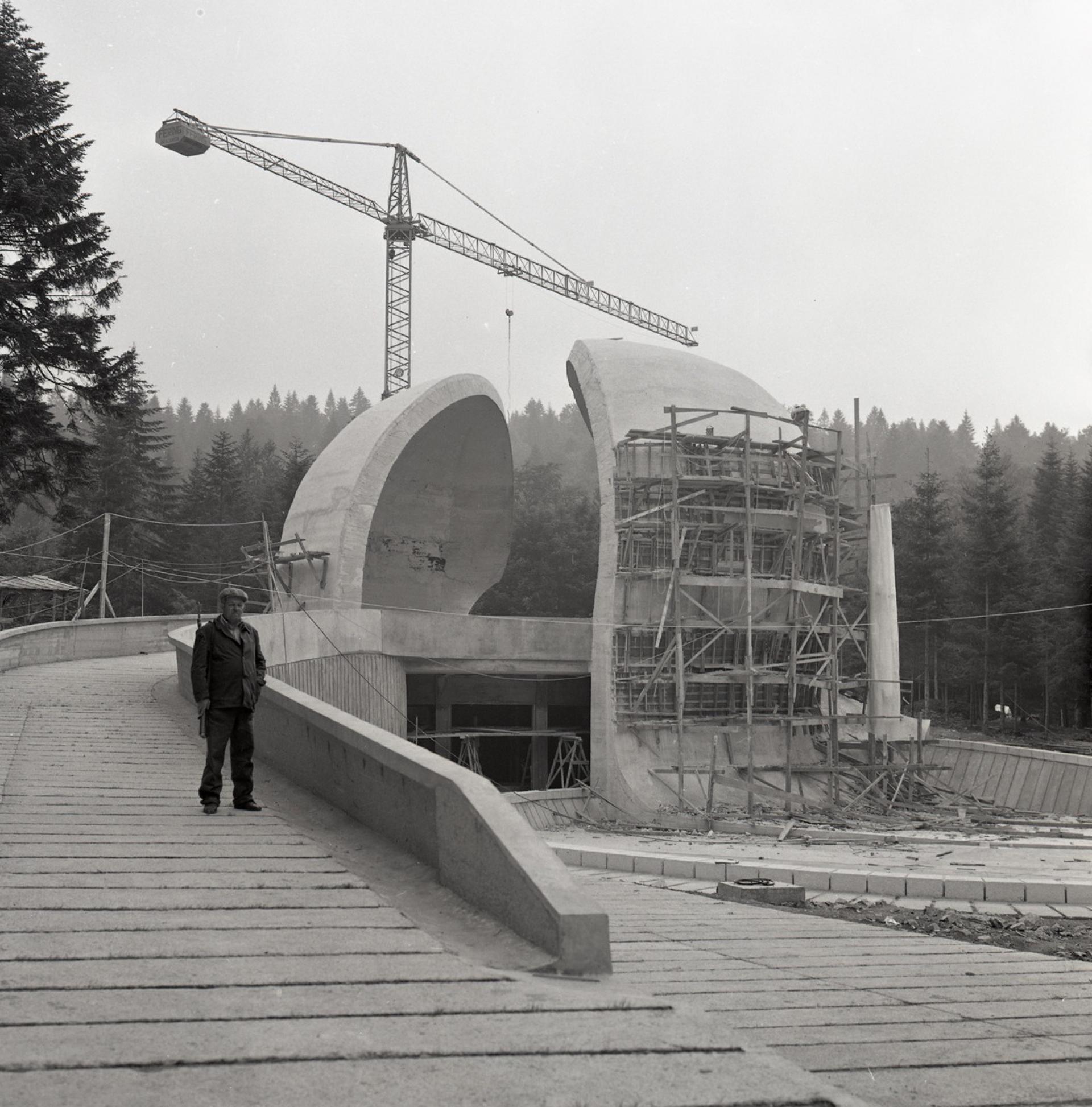Dignity Of Memory
After almost 30 years since the break-up of Yugoslavia, we can take a stroll through a part of the architectural history with the benefit of distance.

The heritage of Yugoslav architecture was taken on almost a decade ago by Croatian Architects Association in collaboration with Maribor Art Gallery with the regionally conceived project Unfinished Modernisations – Between Utopia and Pragmatism – Architecture and Urban Planning in the Former Yugoslavia and the Successor States, and last year with the global exhibition in New York City’s MoMA Toward a Concrete Utopia: Architecture in Yugoslavia, 1948–1980.

In the architecture and art of ex-Yugoslavia, the monuments to the victims of the People’s Liberation War stand out. Through their artistic language, they remind us of the dignity of human life and death. They are powerful markers of the once-common state’s public open space. Their unique architectural and artistic design has placed them on a field of timelessness, which is not constrained by geographic and cultural borders, age, race, or political views.



Memorial complex to the Battle of Sutjeska is an exceptional work by Miodrag Živković and one of the best sculptural memorials in the Yugoslav space. | Photo from the archive of Miodrag Živković
Monuments were built and designed by Yugoslav architects and sculptors of the highest profile, such as Bogdan Bogdanović, Edvard Ravnikar, Miodrag Živković, Dušan Džamonja and many others. Instead of the regime’s symbolism, their creations combined the present, the past, the elements of antique necropolises, ethnography and spatial poetics.

Last and First Men by Johann Johannsson (2020) narrated by Tilda Swinton
The monuments are predominantly designed as sculptural-architectural structures, abstract architectural sculptures. Many were constructed in concrete, which was elevated to the status of noble material by virtue of shaping and finishing. They are sited in authentic spatial situations and historical settings, designed as a commemorative path. Every monument tells a story connected with the events and victims.

Memorial complex Korčanica is dedicated to the largest Partisan hospital, which was active in the liberated territory of the slopes of Grmeč between 1942 and 1943. | Photo from the archive of Miodrag Živković
In mid-march 2019, Gallery DESSA, ab-Architect’s Bulletin magazine and Architectuul began the preparations for the exhibition and publication named Architecture. Sculpture. Remembrance.; The Art of Monuments of Yugoslavia 1945–1991. On the basis of high architectural and artistic value of the structures and the exceptional contemplative qualities of the spatial designs, the curators selected 33 monuments and memorial complexes from all the republics and autonomous provinces of ex-Yugoslavia. The exhibition was prepared in collaboration with authors, photographers, institutions from the ex-Yugoslav region, which has also laid the foundation for future co-operation. The exhibition will present and evaluate the exceptional architecture of the Yugoslav monuments, whose aesthetic and structural innovation is enhanced by their idiosyncratic artistic expression.

The memorial complex Kadinjača by is dedicated to the Partisan fighters of Workers’ Battalion of Užice. | Photo from the archive of Miodrag Živković

Monument to the Revolution by Dušan Džamonja is located at the highest peaks of Kozara mountain. | Photo from the archive of Miodrag Živković
Monuments are also political art, they are an uncompromising tribute to humanity, to reverence towards the victims, conveyed by means of the authors’ individual artistic expression. With the dissolution of Yugoslavia into individual independent states in 1991, it seems that the need for respecting the remembrance expressed by its memorials is waning. As a result, the present state of repair of the monuments and their treatment varies depending on the region. In some places, the past and the strivings of the previous generations are held in respectful memory while elsewhere, the monuments have been abandoned, left to ruin, or even desecrated.
Due to their abstract nature, they may be used for very different purposes, such as shooting TV advertisements and music videos, or as fashion runways. Such use of monuments by individuals who have no appreciation or knowledge of the past and therefore cannot respect it represents misuse as well as contempt for the dignity of the victims and their memory.
The exhibition is planned to be shown in all the former Yugoslav republics. We wish to foster a sober and respectful assessment of the value of ex-Yugoslav monuments and draw attention to their cultural and contemplative significance, and thus lend support to the maintenance and preservation of the memorial areas. It will present the exceptional, progressive, and still-contemporary creative language of their artists and other creators, which transcends the superficiality of the quest for the different, the exotic, the picturesque, and the unknown. Monuments are ties to the past, they reminiscent of the dignity of human life and death. And remembrance.

The exhibition started to travel to different cities of the territory of Ex-Yugoslavia. Because of COVID-19 restrictions the project continues online. The next stop is co-hosted by the creative community Avtomatik Delovišče under the auspices of the Municipality of Koper. Together with Architectuul 33 monuments will be presented daily with a conclusion online webinar on 29. November 2020.
Architecture. Sculpture. Memory., The art of monuments of Yugoslavia 1945–1991, online webinar 29 November 2020, Dessa, AB, Avtomatik Delovišče
Curators Boštjan Bugarič, Kristina Dešman, Maja Ivanič, Špela Kuhar, Eva Mavsar, Špela Nardoni Kovač, Damjana Zaviršek Hudnik
Media partner Architectuul